Specialized air defense systems and missiles for combating UAVs
Modern anti-aircraft missile systems and systems are capable of combating a variety of air targets, including small and medium-sized unmanned aerial vehicles. Moreover, the characteristics of typical anti-aircraft missiles may be excessive for such purposes, which worsens the technical or economic aspects of interception. In this regard, a number of countries are exploring the creation of specialized air defense systems and missile defense systems to combat small-sized UAVs.
Objective factors
Until recently, the main targets for air defense systems were considered to be full-size aircraft - airplanes, helicopters and heavy large UAVs. The required level of performance of anti-aircraft systems and their missiles was determined by the need to detect and ensure the destruction of precisely such objects. As a result, modern missile defense systems can have a flight range of up to several hundred kilometers and carry a warhead weighing tens of kilograms.
Now the main threats from the air include small and medium-sized UAVs for reconnaissance and strike purposes. They have their own specifics and are a more difficult target for modern air defense systems. A number of their features make interception difficult and also worsen economic performance. An important factor in this context is the discrepancy between the characteristics of anti-aircraft missiles and the tasks being solved.
Thus, most light UAVs can be detected and tracked only at short ranges or in the near zone. In this regard, the launch of the missile defense system is carried out from a minimum distance, and the ammunition does not get the opportunity to realize its full energy potential and show all its flight characteristics. Then there may be difficulties in aiming at an inconspicuous target. Small UAVs are not durable; a single bullet or shrapnel is often enough to destroy them. In this case, a warhead weighing kilograms or more is simply redundant.
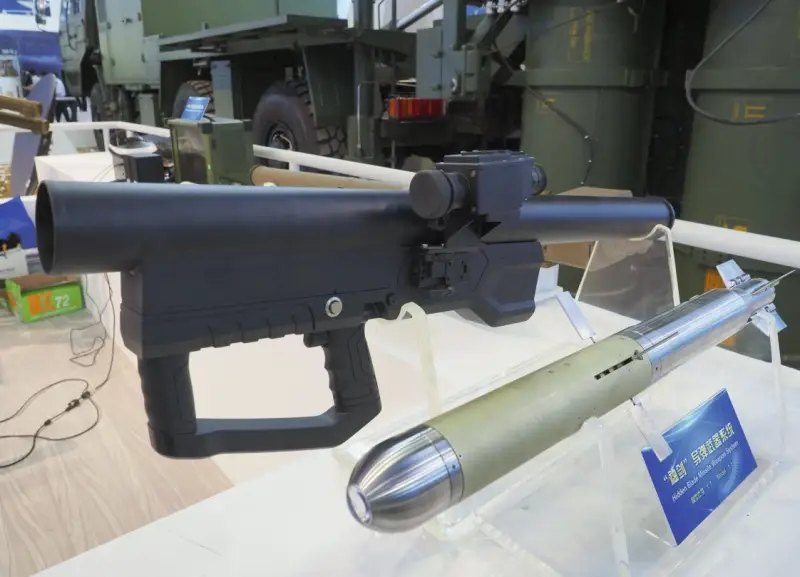
Chinese MANPADS "Xu Jian". Photo by Jane's
The widespread use of drones and the emergence of new tactics for their use, incl. to solve combat missions, in recent years it has become an incentive for the development of anti-aircraft weapons and the expansion of their functions. In particular, projects of specialized systems or ammunition for them, designed specifically to combat UAVs, are already being proposed. Artillery systems are still the most popular in this area. However, missile systems with corresponding capabilities have already appeared.
Chinese solutions
China was one of the first to tackle the problem of protection against small UAVs. He presented the first developments in this area in the middle of the last decade, ahead of some other countries. However, it is not yet known whether the new models have reached adoption.
In November 2016, the Chinese aerospace corporation CASC first showed the Xiu Jian (Hidden Sword) multi-purpose compact missile system. This product was created as a compact portable means for high-quality reinforcement of infantry and special forces. It was proposed to be used as a lightweight MANPADS capable of hitting airplanes, helicopters and UAVs, as well as as an anti-tank weapon to combat lightly armored targets.
“Xiu Jian” was made in the form of a compact installation for firing from the shoulder. The basis of the complex was a launching device with a tubular guide, a sight and a fire control device. The total length of the product in firing position is approx. 700 mm, weight – no more than 10 kg. The complex included a guided missile with a length of 690 mm and a caliber of 60 mm with a mass of 4 kg. The ammunition received a simplified and cheaper photoelectric homing system. The launch range of the missile against an air target was stated at 2 km, against a ground target – 3 km. The possibility of placing the Sword on an aerial platform with an increase in range to 5 km was also mentioned.
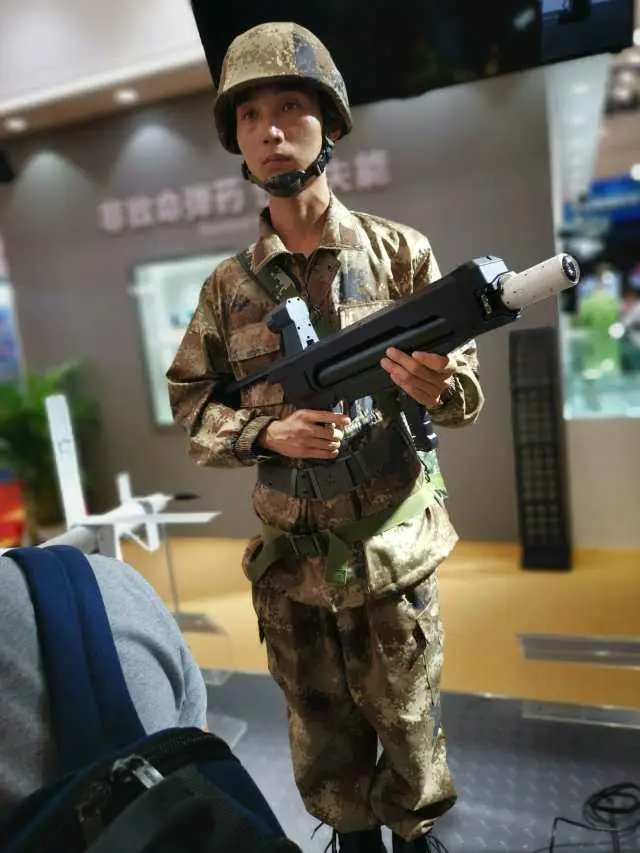
A fighter with a grenade launcher and a QN-22 missile. Photo: Bmpd.livejournal.com
The development organization claimed that by the time of the first show, the new complex had already passed tests, and preparation for production had also been completed. They were going to launch the series if there was an order. Subsequently, “Xiu Jian” was repeatedly shown at new exhibitions, but nothing was reported to customers about the series and deliveries.
In 2018, Wuhan Guide Infrared introduced the QN-202 “micro-missile homing system.” The basis of this complex was a new small-sized missile with a full-fledged seeker. An existing 40-mm hand grenade launcher was proposed as a launcher for it. A backpack container for carrying six missiles was also demonstrated. It was reported that the QN-202 complex with ammunition can be carried and used by just one person.
The rocket for the QN-202 was made in a cylindrical body with a transparent head fairing and two sets of folding planes. Product length – approx. 500 mm, weight – 2 kg. Using a solid fuel engine, it flew 2 km. The product received a simplified infrared seeker, suitable for attacking air and ground targets. The parameters of the warhead were not specified.
The QN-202 complex attracted the attention of specialists and the public, but apparently things didn’t go any further. The adoption of such a complex for service has not been reported.
American project
A few years before the QN-202, the American company Raytheon showed a similar missile system called Pike. It was a small-sized missile designed to be launched from standard 40 mm grenade launchers. The main task of such ammunition was considered to be combating ground targets, but the possibility of working against low-speed air targets was not excluded. However, such potential of the complex has not been fully tested and/or demonstrated.
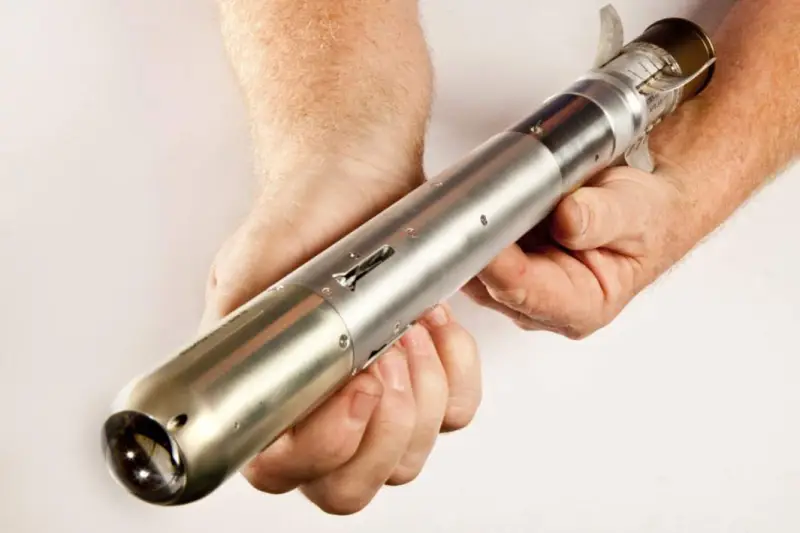
American product Pike. Photo by Raytheon
The Pike missile has a caliber of 40 mm, a length of 430 mm and a weight of 770 g. It was possible to fit a full-fledged semi-active laser homing head and a high-explosive fragmentation warhead weighing 270 g into the product body. The maximum firing range was determined to be 2 km.
The Pike product has been tested and has confirmed its performance. It was introduced to the international market, but little success was achieved. So far, only one order from Canada is known. The special forces of this country received a number of missiles. Whether they use the light missile's anti-aircraft capabilities is unknown.
Russian Experience
The Russian army uses portable air defense systems of current models - “Igla” and “Verba” - against light enemy UAVs. Full-size complexes are practically not involved in such tasks for objective reasons. However, the Ministry of Defense and industry take into account the existing threats and take action.
A few years ago it became known that the Pantsir-SM missile and gun complex would receive a new specialized weapon against UAVs. A missile defense system known as 19Ya6 was developed for it. This product is noticeably shorter than standard Pantsir missiles and is several times lighter. Four missiles of this type are placed in transport and launch containers, placed on standard launcher mounts.
All technical features of the new 19Y6 rocket remain unknown. However, it is reported that it is equipped with a radio command guidance system and has a flight range of up to 8-10 km. The mass of the warhead has been reduced to an acceptable level corresponding to the tasks being solved.
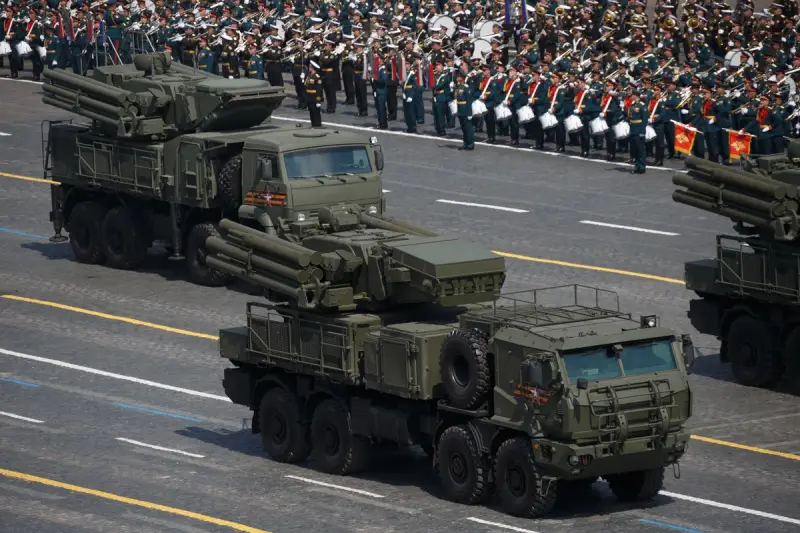
ZRPK "Pantsir-SM" at the parade. New TPKs with small-sized missiles are visible. Photo by the Russian Ministry of Defense
According to known data, the Pantsir-SM air defense missile system and the new missile defense system for it are at the final stage of testing. There were also reports of military tests in the zone of the Special Operation to Protect Donbass. All this indicates the imminent completion of the entire inspection program, the launch of mass production and the entry of equipment into the troops.
Different approaches
The need to counter light and medium UAVs has not raised questions for a long time, and various ways to solve this problem have been proposed. Moreover, certain means for suppression or interception are actively acquired by leading armies, and some of them even use such equipment during real combat operations.
The fight against UAVs is carried out using different methods and means. It is possible to suppress their radio communication and navigation channels by means of electronic warfare or destroy the device using cannon weapons or missiles. For various reasons, electronic warfare stations and barrel systems are most widespread in practice. However, measures are being taken in the field of missiles, and new specialized air defense systems and missiles are appearing, optimized to combat small UAVs.
It is quite possible that air defense systems designed to combat UAVs will hit the battlefield in the near future and will be able to show their capabilities. There is every reason to expect that 19Ya6 products and other similar developments, incl. foreign ones will perform well and will be included in the standard ammunition of anti-aircraft systems.
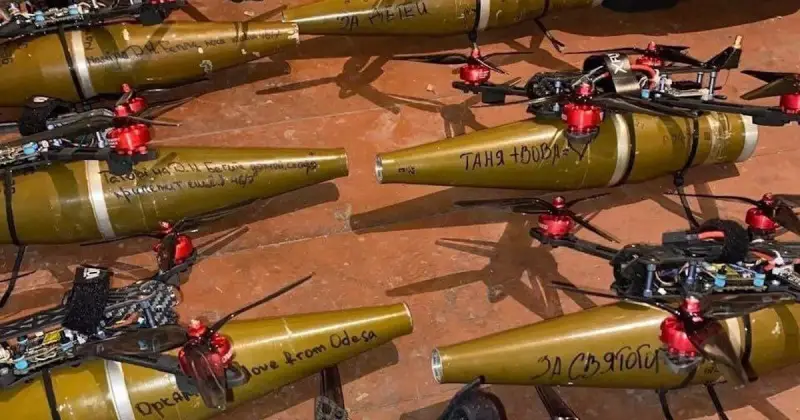
Information